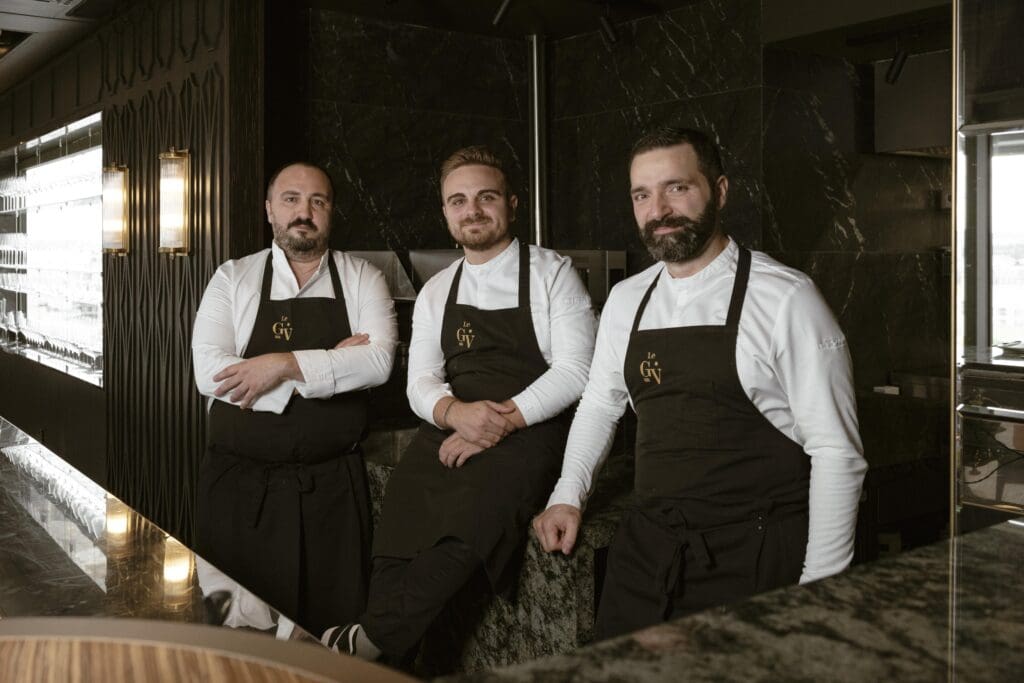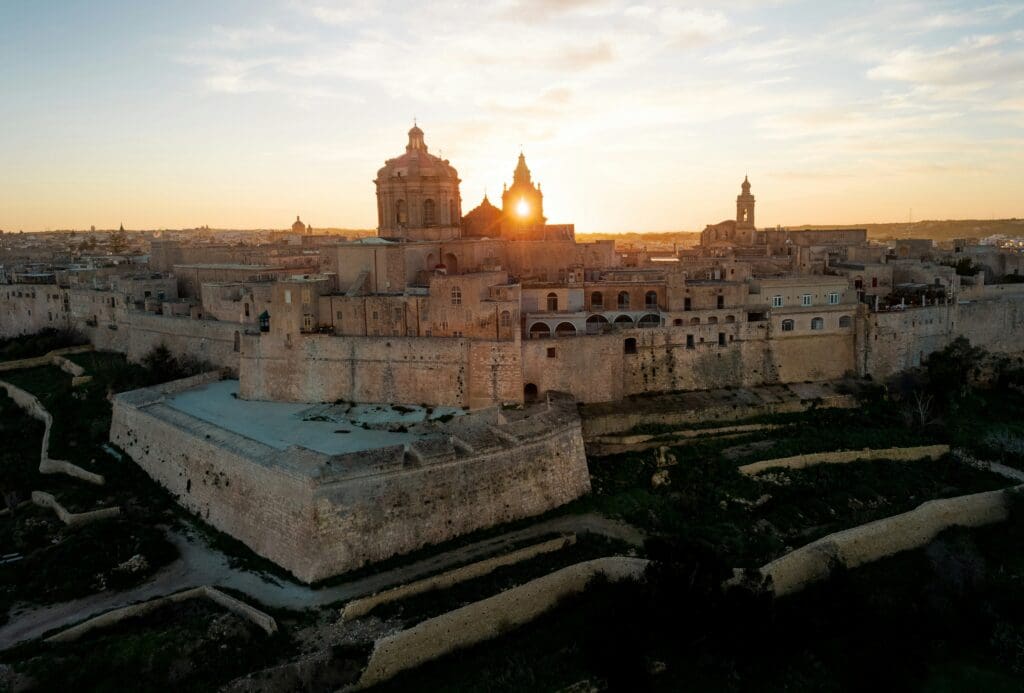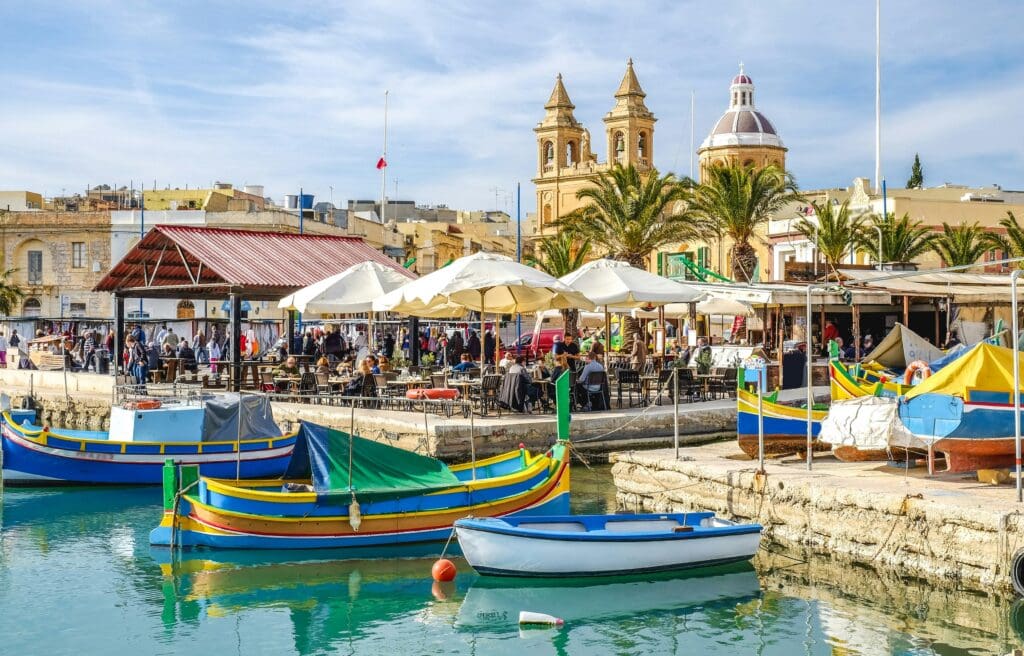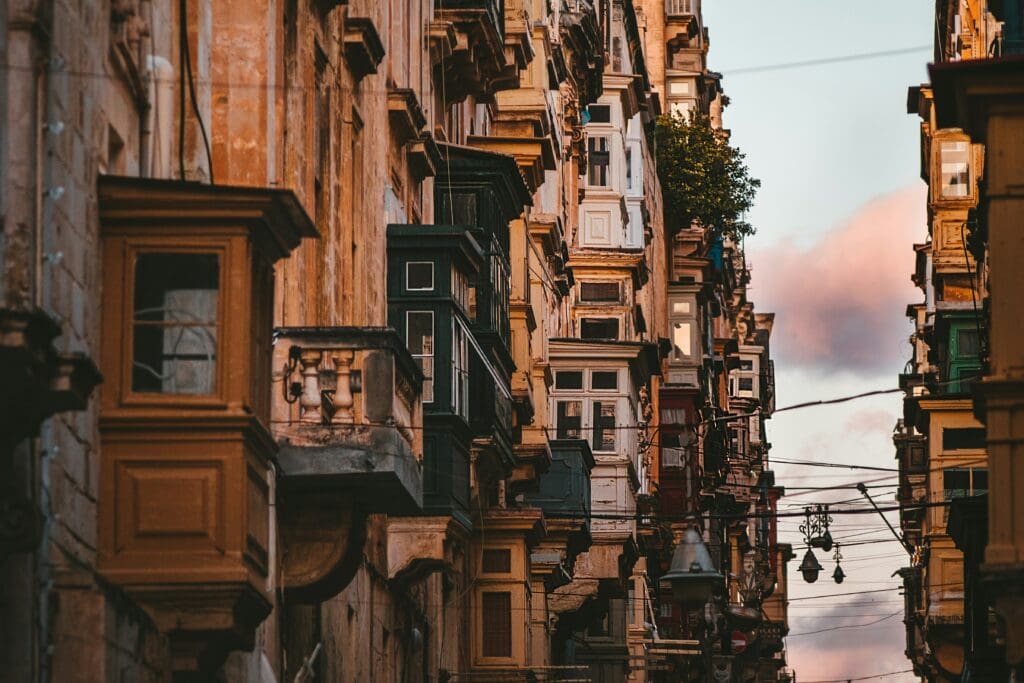—Why this tiny archipelago punches above its weight for discerning travelers
Forget the overcrowded beaches of Santorini or the tourist traps of the French Riviera. Malta, a trio of limestone islands floating in the Mediterranean between Sicily and North Africa, offers something increasingly rare: authentic Mediterranean charm without the circus.
At just 122 square miles—smaller than Philadelphia—Malta packs more history per square foot than almost anywhere on Earth. Three UNESCO World Heritage Sites, 8,000 years of civilization, and enough baroque architecture to fill a dozen coffee table books. Yet somehow, it remains largely off the American radar.
That’s changing. And fast.
The Food Scene Has Arrived

Malta’s culinary transformation tells the story best. In 2025, the Michelin Guide honored ION Harbour in Valletta with two stars for the second consecutive year—a remarkable achievement for an island most Americans couldn’t locate on a map five years ago. Six additional restaurants earned one-star recognition, including three newcomers: La Pira, Risette, and The Seafood Grill Market.
This isn’t tourist food dressed up with fancy plating. Malta’s cuisine reflects its complex history—Arabic spices meeting Mediterranean techniques, with British and French influences layered on top. The local pastizzi (flaky pastry filled with ricotta or peas) costs less than a dollar and beats most croissants you’ll find in Paris. The traditional ħobż biż-żejt—crusty bread topped with tuna, capers, and tomatoes—makes the perfect light lunch between historic sites.
Don’t miss the indigenous wines either. Malta produces two unique varietals: Ġellewża for reds and rosés, and Girgentina for whites. Local winemakers have been perfecting these grapes for centuries, creating wines that taste distinctly Mediterranean yet unlike anything from Italy or Spain.
History Without the Crowds
Valletta, Europe’s smallest capital, functions as an open-air museum where you can actually move around freely. Built by the Knights of St. John in the 16th century, every street corner reveals another architectural marvel. St. John’s Co-Cathedral houses the only painting Caravaggio ever signed—hanging in a church you can visit without advance reservations or timed tickets.
The contrast with Rome or Florence is stark. Here, you can photograph the Upper Barrakka Gardens overlooking Grand Harbour without dodging selfie sticks. The Manoel Theatre, one of Europe’s oldest working theaters, still hosts performances in an intimate setting that feels more like a private concert than a tourist attraction.
Malta’s prehistoric temples predate Stonehenge by over 1,000 years. At Ħaġar Qim and Mnajdra, you’ll find some of the world’s oldest free-standing stone structures, built between 3600-3200 BC. Unlike other archaeological sites, these temples aren’t roped off behind barriers—you can walk among structures that were ancient when the pyramids were built.
The Silent City and Beyond

Thirty minutes from Valletta sits Mdina, the former capital known as the Silent City. Cars are banned from most streets, creating an atmosphere of medieval tranquility rare in Mediterranean tourist destinations. Game of Thrones fans will recognize it as King’s Landing, but the city’s appeal extends far beyond its Hollywood connections.
The narrow streets, lined with honey-colored limestone palaces, lead to breathtaking views across the island. Unlike the tourist-packed alleyways of Dubrovnik or the crowded squares of Venice, Mdina allows for genuine contemplation. You can sit in a palace courtyard, listening to church bells echo off ancient walls, without competing for space with tour groups.
Where to Stay: Palazzos Turned Hotels
Malta’s accommodation scene reflects its historical depth. Former aristocratic residences throughout the islands have been converted into intimate luxury hotels. These aren’t cookie-cutter resorts but authentic palaces where nobility once lived.
Palazzino Belvedere in Mdina offers just two bedrooms in a medieval palazzo with views across the countryside. Villa Barumbara tal-Larinġ accommodates up to 12 guests in a restored country estate with private pools and extensive grounds. For the ultimate luxury, Cité Privée Maison Malte in the Three Cities provides 24/7 butler service and a private plunge pool overlooking the historic harbor.
The opening of Romègas Hotel in winter 2025 represents this trend’s evolution. Set in a 500-year-old restored palazzo in Valletta’s heart, it offers just 23 rooms and suites with designs that honor the building’s history while providing contemporary comfort.
Island Hopping Made Simple

Malta’s sister islands offer distinct experiences within easy reach. Gozo, just 30 minutes by ferry, feels like a different country—more rural, more traditional, with some of the Mediterranean’s best diving sites. The island’s pace slows to match its agricultural rhythm. Baroque churches dot the countryside between old stone farmhouses, creating landscapes that haven’t changed substantially in centuries.
Comino, the smallest inhabited island, centers around the Blue Lagoon—a natural swimming pool with water so clear it appears artificial. Arrive early to avoid crowds, but even at peak times, the swimming here rivals anything in the Caribbean.
Practical Considerations
Malta’s compact size makes exploration straightforward. A rental car provides maximum flexibility for reaching remote beaches and historical sites, though public transport connects major destinations efficiently. The weekly bus pass costs less than a single taxi ride in most American cities.
English serves as an official language alongside Maltese, eliminating communication barriers that complicate travel elsewhere in the Mediterranean. The euro simplifies transactions, and Malta’s EU membership means familiar standards for safety and infrastructure.
The climate provides year-round appeal, with mild winters perfect for historical exploration and summer temperatures ideal for beach time. Spring and fall offer the best combination of pleasant weather and fewer crowds.
Beyond the Guidebook

Malta’s film industry offers unique experiences for visitors. The islands have hosted productions from Gladiator to Jurassic World Dominion, Napoleon to Game of Thrones. Many filming locations remain accessible, creating opportunities to walk through sets from major Hollywood productions.
Local artisans continue traditional crafts—silver filigree, lace weaving, glass blowing—that have been practiced for centuries. At Ta’ Qali Crafts Village, you can watch masters work using techniques passed down through generations. These aren’t tourist demonstrations but active workshops producing goods for local use.
The nightlife scene in St. Julian’s provides Mediterranean party atmosphere without the pretension of Ibiza or Mykonos. Local bars serve excellent wine and traditional snacks at prices that won’t break budgets already strained by European travel costs.
The Verdict
Malta succeeds where many Mediterranean destinations fail: it offers authentic experiences without sacrificing comfort or accessibility. The islands provide enough historical depth to satisfy serious travelers while maintaining the relaxed atmosphere that makes Mediterranean holidays memorable.
The culinary scene rivals established foodie destinations. The historical sites surpass most European capitals for significance and accessibility. The beaches compete with anywhere in the Mediterranean for beauty and clarity.
Most importantly, Malta still feels like a discovery. You won’t find American chain restaurants or duty-free shopping replacing local character. The islands maintain their distinct personality—part British naval base, part Arab marketplace, part Italian piazza—creating something uniquely Mediterranean yet distinctly Maltese.
For travelers seeking substance over Instagram opportunities, Malta delivers. For those wanting both, it provides that too. In an increasingly homogenized world, these islands offer something rare: authenticity that doesn’t require roughing it.
The New Jersey Digest is a new jersey magazine that has chronicled daily life in the Garden State for over 10 years.
- Staffhttps://thedigestonline.com/author/thedigeststaff/
- Staffhttps://thedigestonline.com/author/thedigeststaff/
- Staffhttps://thedigestonline.com/author/thedigeststaff/
- Staffhttps://thedigestonline.com/author/thedigeststaff/


